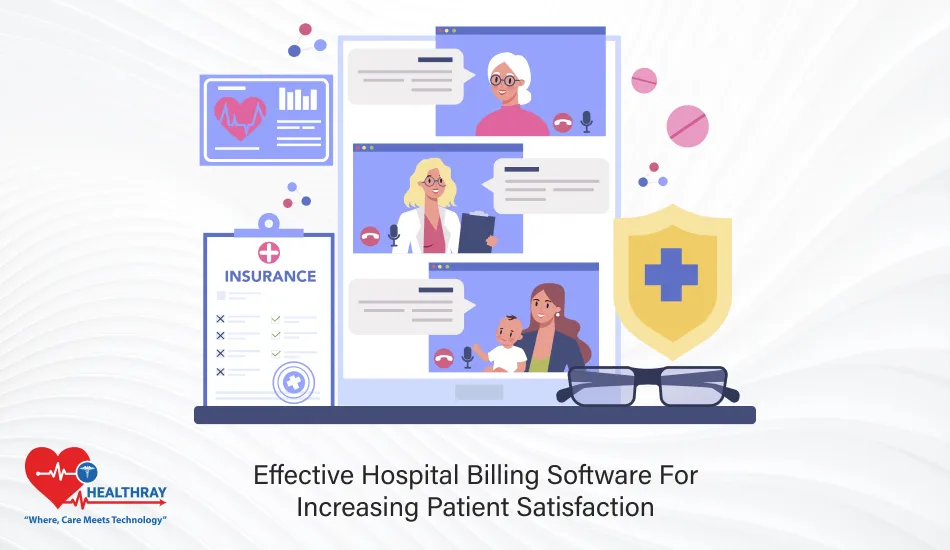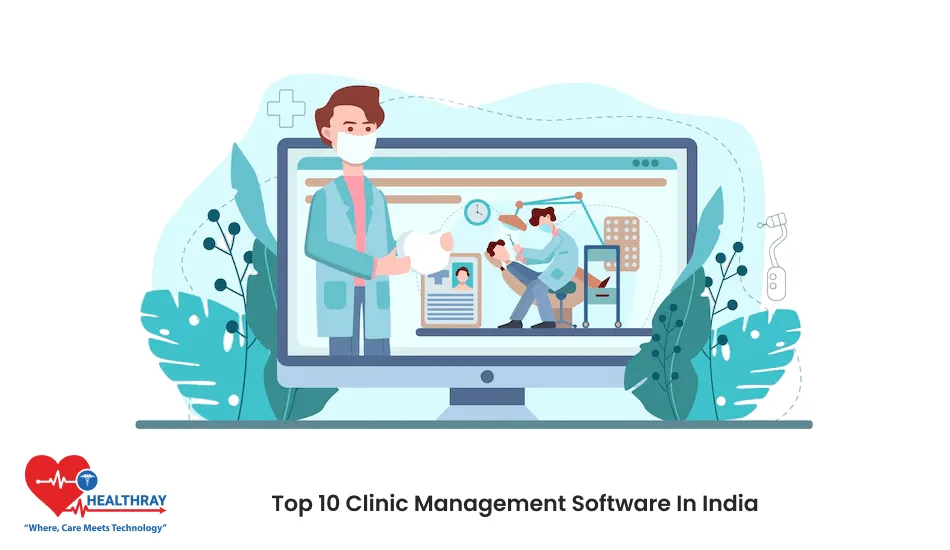How does this relate to patient satisfaction in hospitals? More than you think. Clear, problem-free billing reduces patient stress, builds trust, and leaves a positive imprint on the whole circle of healthcare. Efficient hospital billing software is highly important in this respect since it makes billing smoother, faster, and more accurate.
From automated calculations to transparent itemized bills, today’s billing solutions are game-changers for any healthcare provider who wants to improve patient satisfaction. The software helps not only the patients but also the healthcare administrators, billing managers, and even the doctors who want a seamless financial process to be shown to their patients. In fact, such tools can go a long way toward enhancing the operational efficiency of a hospital by reducing billing errors, saving time, and supporting regulatory compliance.
The article will delve into how effective hospital medical billing software influences patient satisfaction. We are going to consider key features, benefits, and real examples that will help you understand why it is worth investing in upgrading your billing system.
Understanding Patient Satisfaction in Healthcare
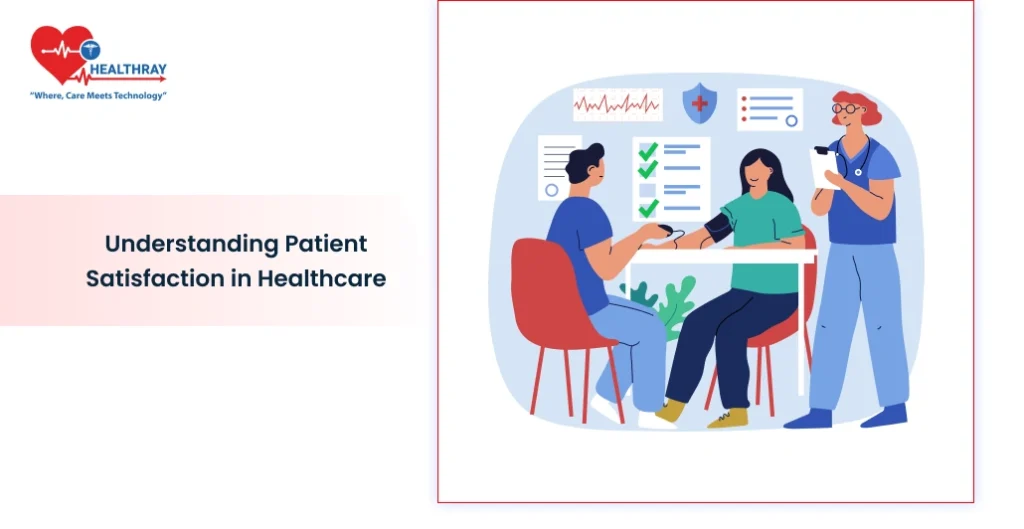
The satisfaction of a patient includes a wide range of experiences beyond medical outcomes. It extends from the way patients are treated by the staff to the smoothness with which they go through administrative processes, like billing. Understanding what drives patient satisfaction is the key to improvements in this area for healthcare administrators, managers of billing, and doctors.
Such factors as waiting time, clarity of medical information, and the general atmosphere of staying in the hospital influence patient satisfaction. Yet, it would come as a real surprise that the billing process also has a great impact. A delay or confusion over the billing may add frustration, even if the care provided for the patient was really good.
A smooth, accurate billing experience comforts the patients and reflects positively on the facility. When patients begin to see itemized bills that are easy to understand, transparency in fees, and quick responses to queries about bills, they definitely will have more confidence in the hospital of their choice. This peace of mind builds trust and contributes to a positive experience with healthcare in general.
The following sections delve into the reasons why traditional billing falls short and how efficient billing software bridges these gaps to fulfill the expectations of modern healthcare consumers.
Challenges in Traditional Hospital Billing
Traditional systems of hospital billing often combine manual procedures with antiquated software, which can create major issues for healthcare providers and their patients alike. In this way, outdated methods result in administrative inefficiencies in the performance of healthcare administrators and billing managers by siphoning off time and resources; they may also negatively impact patient satisfaction.
The most common challenge associated with traditional billing is human error. For as long as the teams in charge of billing depend on manual data entry, there is a greater likelihood of various mistakes that can happen, including the wrong charges, duplicate entries, and missed insurance information. These errors are a headache not only to the billing personnel themselves, but they also translate into frustration for patients since they may get unexpected charges or delays in solving issues on the bills.
Others include a lack of transparency; many times, patients are kept in the dark concerning costs associated with treatment until they receive a bill. In the absence of this information upfront, it could contribute to sticker shock, disputes, and even mistrust of the provider. Besides, slow processing adds to the wait time, while long approval stages make patients remain uncertain about their financial responsibilities.
In addition, departmental variation in billing standards can be a breeding ground for confusion, especially in larger healthcare facilities. For instance, when different departments vary their approach to billing, a patient may get multiple bills that are difficult to reconcile, adding another layer of frustration.
These barriers to traditional medical billing outline the need for an effective, modern solution. Next, we will explore advanced hospital billing software features and how they precisely meet these challenges.
Features of Effective Hospital Billing Software
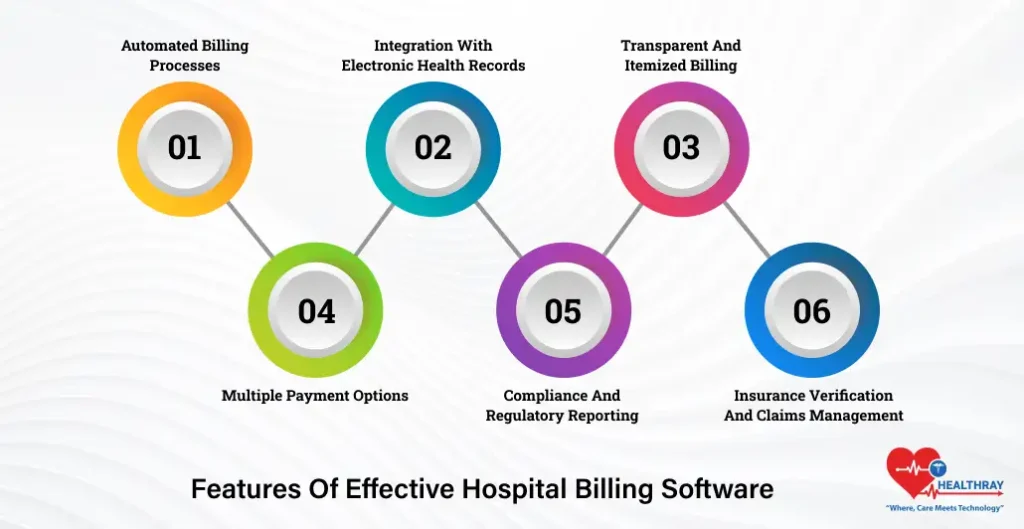
Modern Hospital Information Management Systems are designed to handle the pain points common in traditional billing systems. The software automates this and makes the billing process smooth, therefore easing financial interactions between healthcare providers and patients for an all-rounded enhanced experience. Some of the key features that make hospital billing software a worthy investment include:
Automated billing processes
In itself, automation is a core feature, as it lessens the workload on billing teams. Charges are accurately calculated and applied with automated billing while minimizing human error. It removes redundant data entries as well, meaning faster and error-free billing cycles. Faster issue resolution also means fewer disputes.
Integration with Electronic Health Records
The ease with which the hospital billing software can integrate with any EHR ensures that the billing and medical information are kept in sync. Such integrations foster real-time updates of treatments, tests, and other billable activities, thus giving a comprehensive view of the status of a patient’s billings. In this way, the whole process is smoothened for the people in the hospital, and bills coming out are clear and accurate for the patients.
Transparent and Itemized Billing
Transparency helps in building trust in patients. Through the use of efficient billing software, hospitals are able to generate itemized bills with a clear indication of all services, their charges, and what a patient pays for precisely. This gives them a full understanding of the cost of care and reduces disputes.
Multiple Payment Options
Today, patients expect flexibility in their payment options. Advanced billing software is able to accommodate numerous forms of payment, such as credit cards, online payments, and installment plans. This flexibility makes it easier for them to manage their payments, hence increasing patient satisfaction and timely payment.
Compliance and Regulatory Reporting
Compliance with healthcare regulations is very important. Efficient billing software will allow for compliance in billing practices concerning the existing laws and standards such as HIPAA in the United States. This does not only ensure security regarding patient data but also protects the hospital from large regulatory fines, at the same time providing a secure and compliant billing environment.
Insurance Verification and Claims Management
With integrated insurance verification capabilities, the billing software can confirm coverage in advance or at the time of treatment, thereby reducing the risk that any coverage issues or denials occur afterward. Billing software for hospital organization streamlines claims processing and provides ease in submitting and tracking claims, reducing turnarounds for reimbursement.
These features are intended to ease the billing process right from the start to the end, with the hospital and the patient being at an advantage. Next, we shall see how these features translate to real benefits, including improved patient satisfaction, on the part of healthcare providers.
Benefits of Integrating Billing In Hospital Management Software
Clearly, such efficient billing software does more than enhance backend processes; it impacts the patient experience directly, which is very much a priority for any healthcare provider concerned with satisfaction and retention. Thus, implementation of the advanced billing software can help to make a measurable difference:
Improved Patient Satisfaction and Trust
Clear and accurate billing builds trust. When patients receive easy-to-understand bills with transparent charges, it alleviates the stress that often comes with medical expenses. Such clarity increases the level of confidence in hospital services among patients, who, when the need arises, will seek future care at this facility and recommend it to family and friends.
Reduced Billing Errors and Disputes
Therefore, efficient billing software minimizes human mistakes, such as overcharging and double entries, by automating the billing process and integrating it with EHRs. This lessens the possibilities of disputes in billing. In addition, the billing software for hospitals improves the financial relationship between the patient and the hospital. Smoothing out errors means billing departments can resolve issues faster, creating a seamless experience for all involved.
Operational Efficiency Enhanced
The most significant benefit of the billing software to a billing manager or any healthcare administrator is operational efficiency. Automation enables staff to process billing tasks faster and more accurately, therefore freeing up their time for other critical work. This reduction in manual workload also means quicker billing cycles, which lead to faster payments and improved cash flow for the facility.
Better Financial Management and Revenue Cycle Optimization
Efficient billing software enables providers to manage their finances better. Detailed reporting and analytics enable the hospital to track its billing trends, identify the bottlenecks, and hence optimize its revenue cycle. Such proactive pursuit of revenue management keeps revenues coming into the hospitals as they strive to improve patient care.
Faster Approvals and Reimbursement of Insurance
When insurance verification and claims management feature in the billing software, handling insurers becomes less cumbersome. Coverage can be verified and claims submitted in real time, which cuts reimbursement time down drastically. This helps both the hospital as well as the patient. Faster approvals also mean that patients are clearly told what will be covered and what should be out-of-pocket, reducing confusion.
These benefits help explain why many care providers have now begun upgrading their billing systems. Next, let’s look at some case studies of successful implementations of billing software at hospitals and what was reported in terms of positive changes to patient satisfaction and operational efficiency.
Case Studies and Success Stories
Examples of some successful implementations in various hospitals best describe the real effect of good billing software. Presented below is how three such hospitals, namely GM Hospital, Universal Hospital, and Sri Manakula Vinayagar Hospital, worked to improve their billing processes, thereby directly enhancing patient satisfaction.
GM Hospital
Billing delays and complaints about unclear charges from patients were endless worries for the administration at GM Hospital. Immediately after installing modern billing software, they saw considerable improvements. Automation in billing reduced manual errors by 30%, while immediate integration with their EHR provided them with updated patient service records. Patients received timely and itemized bills, while multiple options for making payments made their account settlements easier. Billing software for hospital organization, resulted in a 20% increase in patient satisfaction scores within the first six months of using this new software.
Universal Hospital
Universal Hospital faced a number of challenges, including billing disputes and long reimbursement cycles. Some advanced features of the billing software implemented at the hospital included claims management and verification of patients’ insurance. The new system streamlined the claims process and reduced reimbursement delays by more than 40%. Patients appreciated the transparency in the bills, and there were very few disputes over billing. Hospital administrators also saw enhanced operative efficiency: the software saved nearly 35% of the time spent on billing tasks. Patients expressed better overall satisfaction with the service since they felt confident about the transparency and correctness of the bill.
Sri Manakula Vinayagar Hospital
The earlier fragmented billing system had been a problem to Sri Manakula Vinayagar Hospital, which caused charges to be inconsistent among its various departments. An integrated billing software solution helped them unify the approach toward billing. Compliance features in the system assisted in ensuring the following of regulations to add another layer of security with regard to the stored patient data. The automation of the billing process reduced the administrative workload and freed up staff to be more available for their patients.
Patient satisfaction increased significantly after a year, with most patients complementing clear itemized bills and ease of making payments through various available channels. These examples represent very real instances where efficient billing software transforms the way business gets done. With positive results such as improved patient satisfaction, better operational efficiency, and higher levels of transparency, any hospital wanting to improve its patient experience has more than enough reason to invest in advanced billing systems.
Considerations for Choosing Billing Software
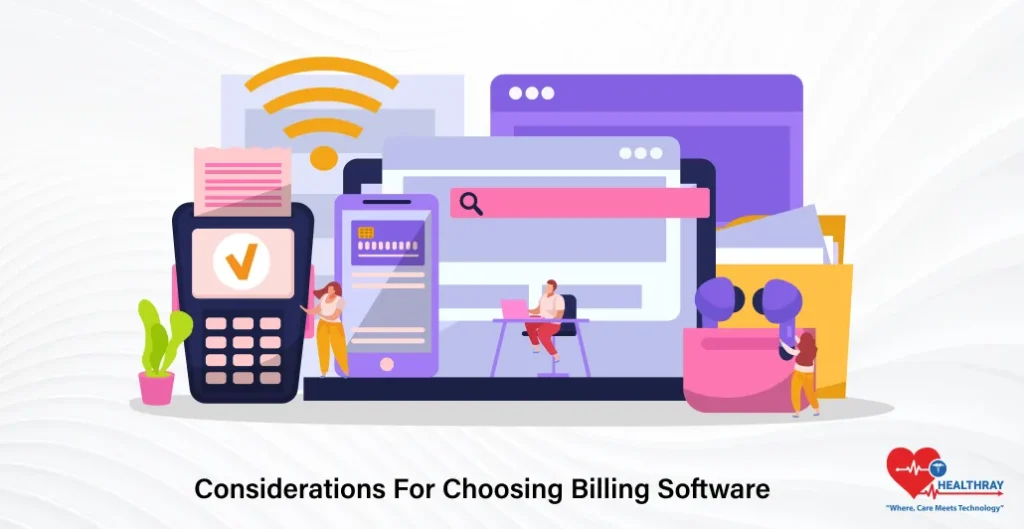
Selecting appropriate billing software for hospital organization is a major decision. It is not about implementing any system, but choosing a solution that is going to meet the peculiar demands of the hospital, improve patient satisfaction, and reduce workforce inefficiencies. Here are some key factors to consider when evaluating different billing software options:
Evaluating Your Facility’s Needs
No two hospitals are exactly alike, nor are their solutions. First, assess your current billing process to identify pain points in areas like billing errors, delays, or lack of integration with existing systems. Take into account the needs of your billing department, administrative staff, and, importantly, your patients. A proper assessment will help with identifying software that addresses specific challenges.
Evaluating Key Software Features
Not all medical billing software solutions have similar features. Key capabilities to watch out for include automation, real-time integrations of EHR, verification of insurance, and claims management. Check if the software provides transparent and itemized options for billing of patients and different modes of payments. These are some of the important features that will help provide a smoother and more transparent experience, benefiting both the hospital and the patient.
Vendor Support and Training
You want reliable support from a vendor whenever you’re installing new software. Determine what level of customer support they will provide, whether follow-up assistance is available, what kinds of staff training programs are available, and what other resources are available to transition smoothly. Good support from a vendor means that your team can get up to speed with the new system without any lost time.
Cost Implications and ROI
This is an investment in new billing software; therefore, the costs involved and the return on investment behind it need to be considered. Assess the upfront and recurring fees of the software against any savings from fewer billing errors, faster claim processing, and reduced administrative overhead. Quite often, in fact, a well-functioning billing system can pay for itself through enhanced revenue cycles and patient satisfaction that bring more patients into your hospital as you improve your reputation.
Compliance and Security Features
Security and compliance, in relation to patient data, are major aspects within healthcare. Ensure the chosen billing software is compliant with healthcare standards, such as HIPAA, about protecting patient information. Billing software for hospital organization renders compliance features not only help in retaining patient trust but also avoid possible legal issues and associated penalties.
Compatibility with Existing Systems
It should be able to integrate with EHR and other Hospital Management Software or any other management software currently being used by the hospital. Seamless integration means real-time data sharing for more accurate billing and a complete patient record. Such compatibility will reduce disruptions and make sure the billing is in step with the other aspects of patient care.
By giving due consideration to each of these factors, your hospital will be able to select a billing software solution to help meet your operational goals, improving patient experience in the process. We then provide guidelines on best implementation practices.
Best Implementation Practices

While such an implementation of new billing software might sound daunting, with a clear plan, it is much easier to smoothly transition into long-lasting benefits. Following software implementation best practices will help the system realize its fullest potential in enhancing operational efficiency and patient satisfaction. Here’s how to get started:
Develop a Detailed Implementation Plan
Create a formal implementation plan that outlines all aspects of the transition. Break this down into goal-oriented objectives, setting deadlines and assigning responsibilities to the concerned staff. Similarly, define timelines for each phase, right from the initial setup to full integration, so that the efficiency of the process is maintained. This will help your team follow along and expect potential complications.
Involve Key Stakeholders Early On
Engage all major stakeholders, including administrators, managers of billing, IT staff, and doctors, right from the beginning. Early involvement helps these groups understand the benefit of the new system and how their needs will be met, thus gaining support for the transition. In this way, when all are on the same page, implementation goes more smoothly, with better adoption rates.
Complete Training of the Staff
Training is a very important ingredient in successful implementation. Provide hands-on training to make sure the staff become comfortable with the new system. The training should include everything from basic navigation to detailed claims management and reporting. Training boosts confidence and reduces errors in the initial days of dealing with the software.
Monitor and Adjust During the Transition Period
The new system’s performance should be closely followed for the first few weeks following its roll-out. Key metrics would include billing accuracy, processing times, and patient feedback on the clarity of billing. Use the data to identify further modifications that may be required. In this way, flexibility and openness to adjustments will allow the hospital to fine-tune the system to meet very specific needs.
Encourage Open Communication and Feedback
Allow the staff to provide feedback and share experiences in the new software. Open communication will help in viewing any pain points that might not be visible and gives them a sense of ownership. The feedback provided by the billing managers and administrators will help you refine the workflows and make the system user-friendly.
Review and Optimize Routinely
Implementation does not stop when the software is up and running. Ongoing system performance review helps to make certain that it continues to achieve the goals of the hospital. Schedule routine assessment and monitoring of metrics such as patient satisfaction, revenue cycle efficiency, and accuracy of billing. Continuous optimization will keep the process of billing smooth and remind your hospital of the value of the software.
The above steps are considered best practices that will ensure the maximum benefit of the newly implemented billing software for hospitals. Lastly, we’ll summarize the importance of upgrading billing systems to enable improvements in both patient satisfaction and operational efficiencies.
Conclusion
Moving to an efficient Hospital Management System is more than a technical upgrade; it’s a strategic step toward ensuring patient satisfaction and operational success. Clear, streamlined billing processes engender trust and reduce the stress often felt by patients because of medical expenses. The software can also be used by healthcare administrators, billing managers, and doctors alike, making workflows easier to handle, minimizing errors, and increasing the potential for revenue management.
